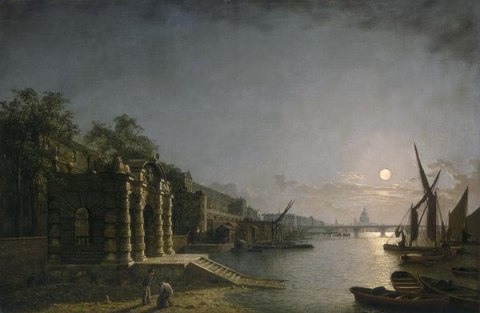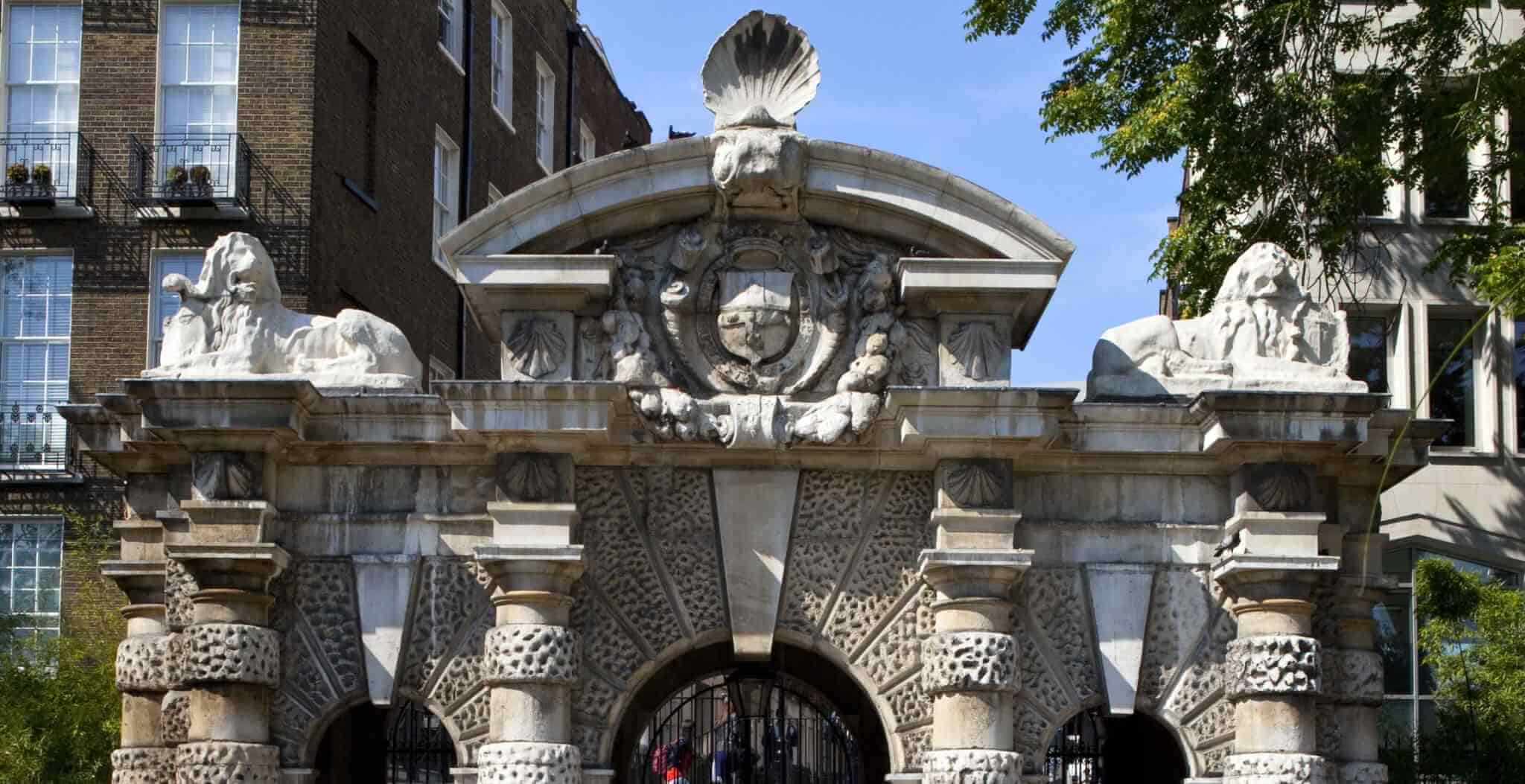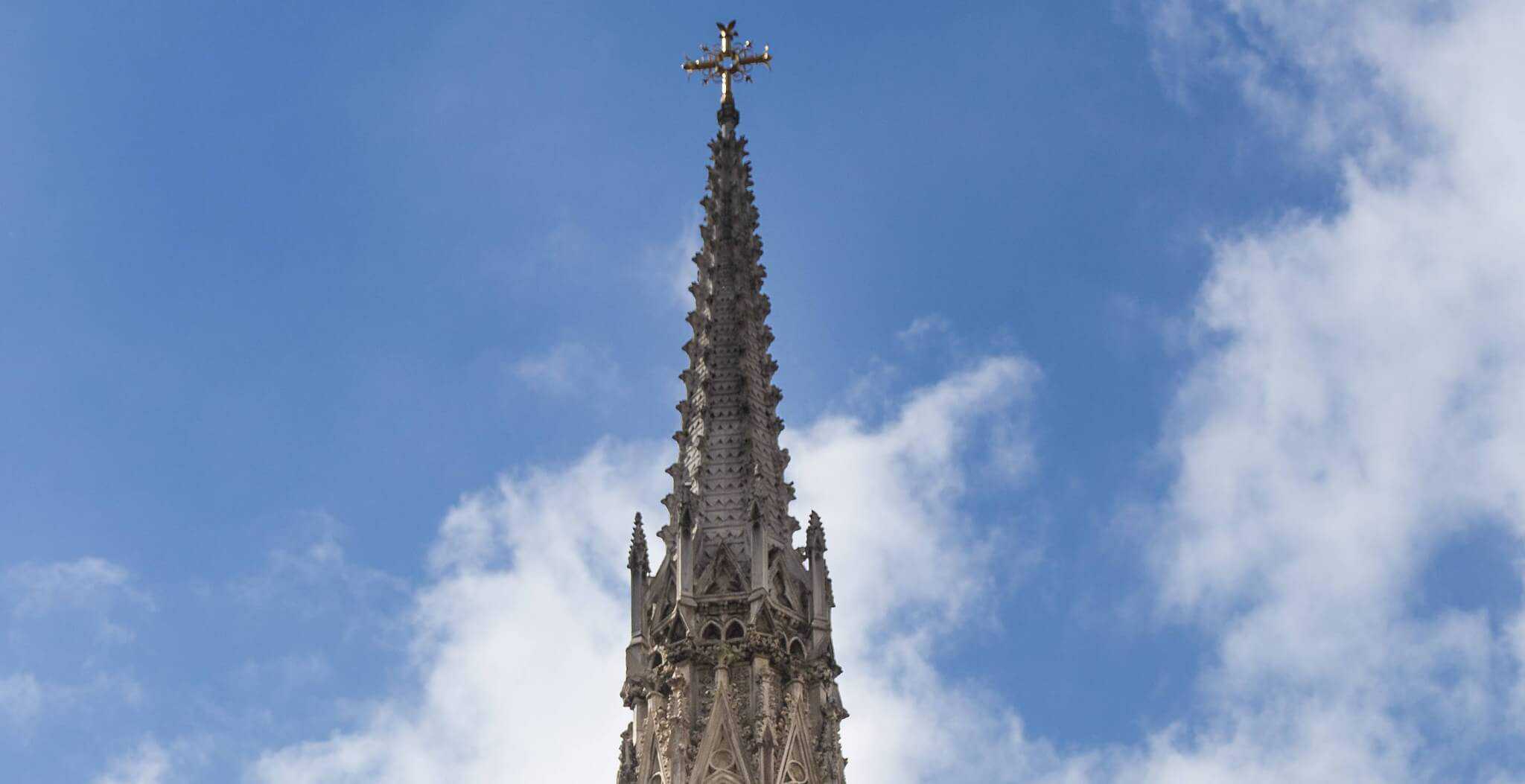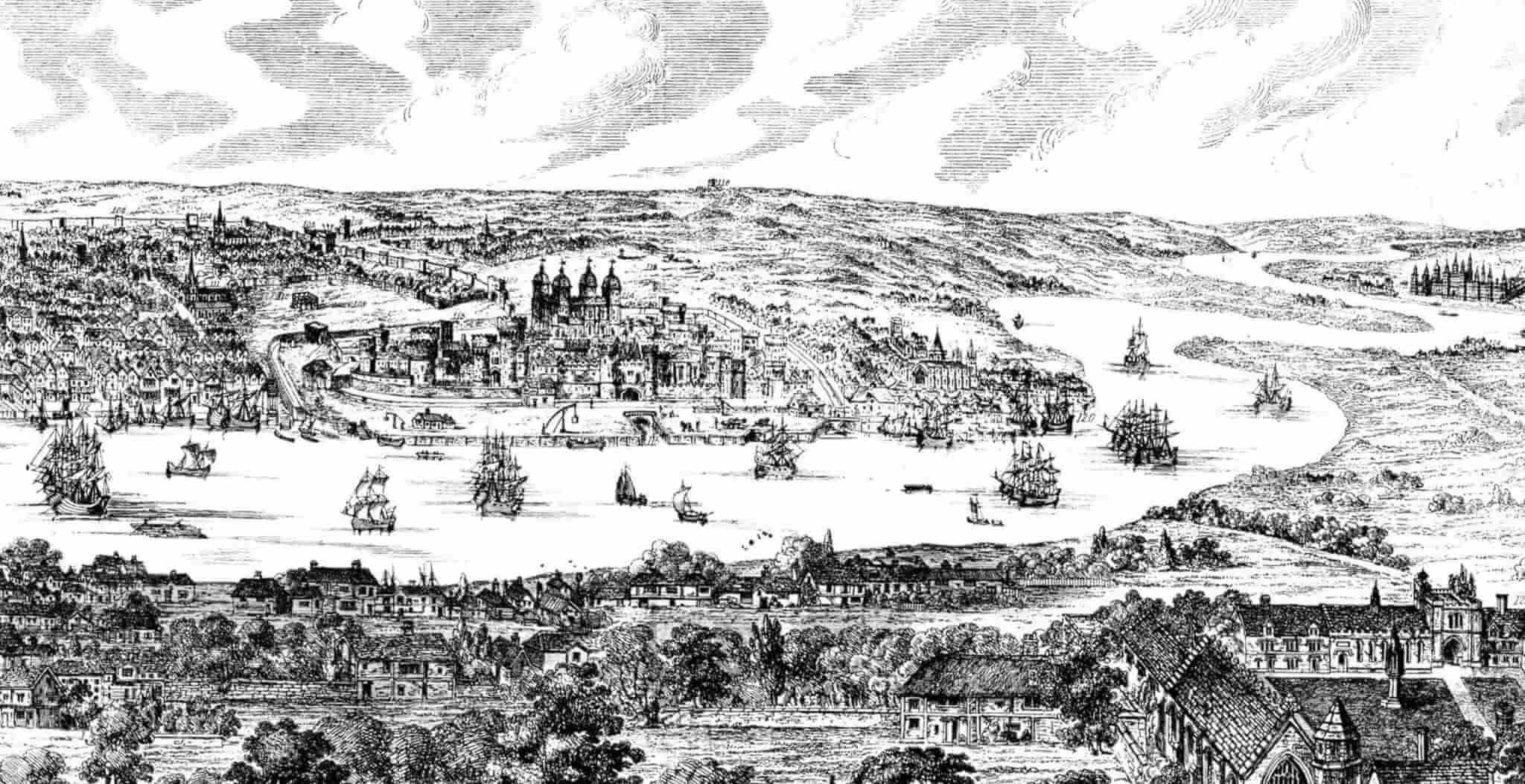The York Watergate marks the site of the original course of the Thames before the construction of the Thames Embankment in the mid-19th century. Once part of the York House mansion, the York Watergate provided quick and easy access onto the Thames and was located at the bottom of the mansion’s garden.
The mansion itself originally stood on the Strand (which in itself means ‘shore of the river’) and was the finest of all the palaces that lined the ancient road. At its peak the Strand was home to some 13 palaces or mansions, with the majority of them lining the south side of the road. Those that were on the south side usually had direct access to the Thames, and therefore was seen as the most prime real estate.

Now lying some 150 meters from the banks of the River Thames, the York House Watergate gives an idea on just how far the river bank moved during the 1864-70 construction of the Thames Embankment.
The Watergate itself was built in 1626 by Inigo Jones, and was an extension to York House which was built in 1620 for George Villiers, the first Duke of Buckingham. If you look closely you can still see the Buckingham family coat of arms on the top of the gate!
Along with the Temple Bar Arch next to St Paul’s and Banqueting House in Whitehall, it is one of the few surviving structures in London that follow the Italianate tastes of King Charles I.
Tours of Historic London
Find out more about this great city by browsing our Selected Tours of London.







